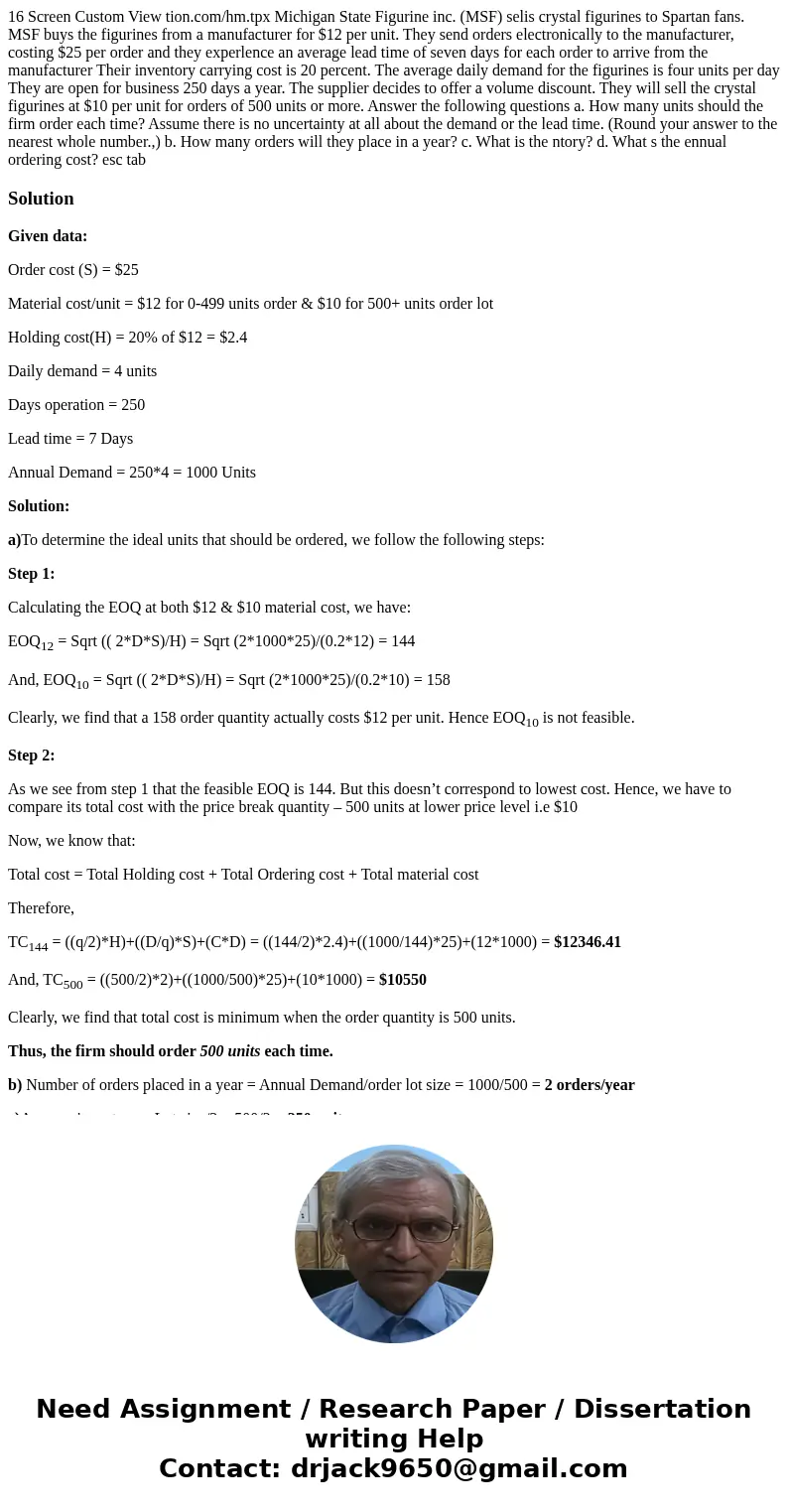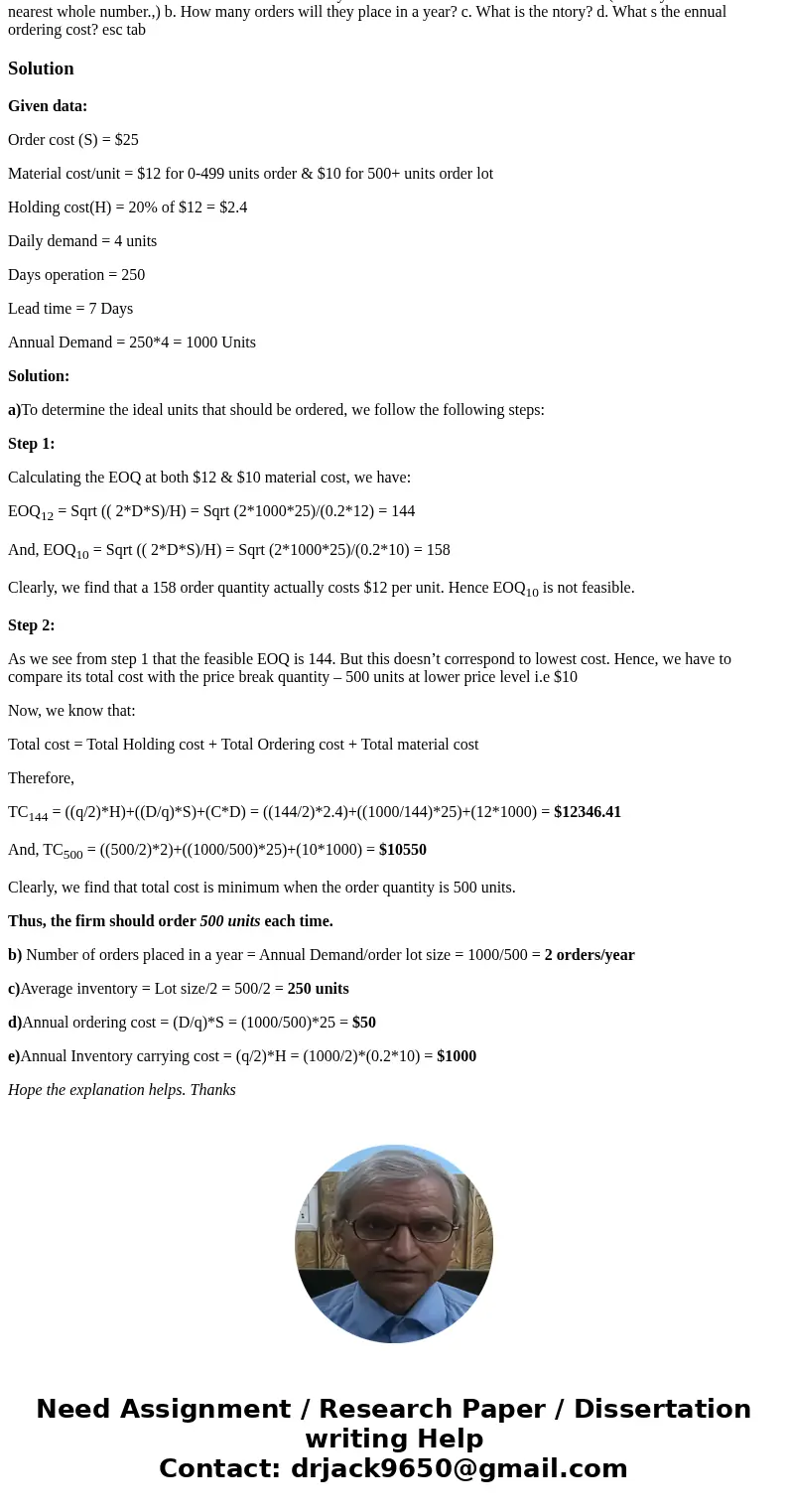16 Screen Custom View tioncomhmtpx Michigan State Figurine i
Solution
Given data:
Order cost (S) = $25
Material cost/unit = $12 for 0-499 units order & $10 for 500+ units order lot
Holding cost(H) = 20% of $12 = $2.4
Daily demand = 4 units
Days operation = 250
Lead time = 7 Days
Annual Demand = 250*4 = 1000 Units
Solution:
a)To determine the ideal units that should be ordered, we follow the following steps:
Step 1:
Calculating the EOQ at both $12 & $10 material cost, we have:
EOQ12 = Sqrt (( 2*D*S)/H) = Sqrt (2*1000*25)/(0.2*12) = 144
And, EOQ10 = Sqrt (( 2*D*S)/H) = Sqrt (2*1000*25)/(0.2*10) = 158
Clearly, we find that a 158 order quantity actually costs $12 per unit. Hence EOQ10 is not feasible.
Step 2:
As we see from step 1 that the feasible EOQ is 144. But this doesn’t correspond to lowest cost. Hence, we have to compare its total cost with the price break quantity – 500 units at lower price level i.e $10
Now, we know that:
Total cost = Total Holding cost + Total Ordering cost + Total material cost
Therefore,
TC144 = ((q/2)*H)+((D/q)*S)+(C*D) = ((144/2)*2.4)+((1000/144)*25)+(12*1000) = $12346.41
And, TC500 = ((500/2)*2)+((1000/500)*25)+(10*1000) = $10550
Clearly, we find that total cost is minimum when the order quantity is 500 units.
Thus, the firm should order 500 units each time.
b) Number of orders placed in a year = Annual Demand/order lot size = 1000/500 = 2 orders/year
c)Average inventory = Lot size/2 = 500/2 = 250 units
d)Annual ordering cost = (D/q)*S = (1000/500)*25 = $50
e)Annual Inventory carrying cost = (q/2)*H = (1000/2)*(0.2*10) = $1000
Hope the explanation helps. Thanks


 Homework Sourse
Homework Sourse